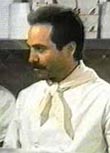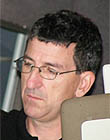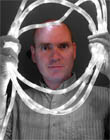|
|
This topic comprises 2 pages: 1 2
|
|
Author
|
Topic: James Cameron May Shoot Avatar 2 At 60 Frames Per Second
|
|
|
|
|
|
|
|
|
|
|
|
|
|
|
|
|
|
|
|
|
|
|
|
|
Hillary Charles
Jedi Master Film Handler

Posts: 748
From: York, PA, USA
Registered: Feb 2001
|
 posted 02-04-2011 07:44 AM
posted 02-04-2011 07:44 AM




quote: Mike Heenan
Roger Ebert was a fan of some film based system that projected at 48fps. I wonder if shot in this speed, would he change his mind about 3d?
Ironically, one of Ebert's most recentest blogs is about that 48 fps system (which he believes should put 3D to bed).
quote:
After 3D, here is the future of film
By Roger Ebert on January 29, 2011 6:28 PM | 124 Comments
When I first saw it in 1999, Maxivision48 produced a picture four times as good as conventional film. It still does. With 3D fading and the possibilities offered by a new Red camera, its time may be here at last.
Dean Goodhill, the inventor of MV48, laid low while seeking studio backing. Now, he tells me, the time has come to go public. After reading the recent letter from Walter Murch I ran on my blog, he wrote me one of his own. -- RE
Dear Roger,
I read your recent piece from Walter Murch with great interest. Walter explained the problems of 3-D perfectly and I would expect nothing less from him. So that inspired me to write with an update on our progress, and the frustrations that keep me up at night.
We're still trying to find additional financial partners that would allow us to build a complete prototype. The studios' commitment to a transition to digital distribution and projection has stopped us for ten years because investors look to them for direction and so do all the major vendors in our technology space.
If sound were a new idea today, it might not be tried. The studios now seem to work in concert when it comes to issues like this. Had they been so unified back in 1930, sound would never have emerged because, as I'm sure you know, all the studios were convinced that it had no value. Check out the newspaper clip that I found. Jack Warner's logic about the "international language of the silent picture" is absolutely true. It's just that Jack didn't consider how much richer "the picture business" could be when supplemented by sound. Jack had to actually be tricked to show up at the Vitaphone demo. He was that disinterested.
Ten years ago, the studio's tech execs decided to replace film with digital distribution and projection. They even posed for a photo tossing brightly colored film cans into a trash bin labeled "obsolete." It kind of looks like a Chinese propaganda poster, doesn't it? It was published in The New York Times. Maybe it made sense, in those days before HD home theater, but they have not reassessed in light of market changes and challenges. Kodak and Fuji know full well that film is hamstrung by anachronistic projection, but they are taking their cues from the studios.
A month after the above photo and story were published, The New York Times film critic, A.O. Scott, wrote of this media event: "...the supposedly imminent obsolescence of celluloid entails nothing less than the death of a cherished and irreplaceable art form based on the alchemy of light, motion and silver nitrate. The year's symbolic moment came at a press conference trumpeting digital cinema, when executives tossed some canisters of film into a trash can, an act equiivalent to torching a Steinway to celebrate the arrival of the latest MIDI sampler."
You can understand why investors would look to the studios and film companies for feedback on the value of MaxiVision. The possibility that the group of them might be wrong about how best to advance cinema and promote the survival of their own products is inconceivable, unless you really know the histories of the ways studios react to technical innovation. They mostly fear it unless it conforms to their prior decisions. So, back in the day, they sued Sony to suppress videocassettes. They were not interested in laserdiscs. They had little interest in DVD when that technology was starting out. They thought DVDs would interest just a small "videophile" niche because most customers wouldn't care about its enhanced quality over VCRs and because DVD machines couldn't record. Both times, they were dead wrong.
These days in the movie business, new ideas like MaxiVision must pass muster with what amounts to a centralized committee of executives from the major studios. It was easy for them to exclude MaxiVision from their plans because, with two exceptions, they've never even seen our proof-of-concept demo. And anyway, they were focused on cost-cutting, not on raising the bar. The two studio guys that did make the trip did so at the behest of their billionaire owner, who had heard of us. When they arrived, they told me that they were only there because they'd been ordered to show up, but that they had no interest in any system that uses film. They were openly annoyed that they'd been asked to check us out. That was a hell of a depressing way to start a meeting. When they finally saw it, they said they didn't care if it was better than current film or digital because "we don't care about quality other than the minimum level the public will accept." When I responded that even if they didn't care, filmmakers do care, they said "the creatives will do what we tell them." It was a scary display of arrogance. But at least they showed up. The rest of the studios' tech guys never even bothered to make the trip, even though Martin Scorsese was quoted in the American Cinematographer saying that he thought MaxiVision was "the most important innovation in cinema in the last half-century."
How can the studios fail to notice that the key to what makes moviegoing special is found not just in the stars and the story, but of offfering a special experience they can't get at home? People need to get out of the house now and then. They want to be attracted. But all we've got now is anachronistic film projectors that are essentially unchanged since 1897. And then we've got digital projectors that produce an image that looks about the same as legacy 35mm. These technologies fail to significantly eclipse home theater. We can do about 500% better.
This graph comes from the RED camera web site to illustrate how much better 5k is than the 2k images that are now common. As you can see, 2k is not much better than 1080p. You can see the original graph from RED here, if you like: All we did is to show the additive effect of our doubled frame rate. The 3-D options we show would have to be driven by a real need from major filmmakers. Our primary emphasis is on MaxiVision48, not 3-D, for all the reasons that Walter Murch and you have written about.
When you last interviewed me, I estimated a 400% improvement with MaxiVision48 and showed you the data and calculations that back that up. But now that Arri has an enhanced film recorder (the Arrilaser 2) we can show uncompressed 5k at 48 frames-per-second. Digital projection can't come within a mile of that at any price, but we can do it with a $20,000 retrofit. Someday, digital projection will be able to match us, but at what price? How many years will that take? Many years from now, MaxiVision could be obsolete. But right now it would be the most vivid experience filmmakers can put on the screen--and without glasses. That may never happen unless the studios consider the possibility that they'd be better off helping rather than ignoring us.
The studio's tech guys are very smart and very knowledgeable, but they have no instinct for showmanship. They're managers, not innovators. They're guys for whom efficiency and cost-cutting is the only worthwhile goal. For them, good enough is good enough. They said exactly that, privately, when some of them were on a panel with me, years ago at the DGA. The fate of the movies shouldn't hang on their judgments. They all seem to be in the same echo chamber, ruled by group-think.
Initially, the studios were just focused on cutting distribution costs by abandoning film in favor of digital projection. They were sure that the public wouldn't know the difference and they told me exactly that in so many words. They were right. Most moviegoers couldn't tell the difference, but that was the problem because it didn't raise the bar on their experience. Regal Theaters' Kurt Hall said exactly that in a NY Times piece. Check out the attached clip of it, which has a great cartoon that says it all. Maybe the studios didn't realize how good HD home theater would get to be, but after 1080p and surround sound had made their way into millions of homes, an AOL poll revealed that a majority of respondents said they actually preferred seeing DVDs at home. Then came AVATAR and the studios thought 3-D, rather than James Cameron's incredible craft and artistry, was the key to its success. They believed that AVATAR was a technical, rather than a cinematic, triumph; and that 3-D was all they needed. And as audiences declined, they relied on their 3-D up-charge with second-rate 3-D to compensate. Then, they patted themselves on the back when revenues rose on declining attendance, as if that were a sustainable plan for the future.
Originally, the studios' opposition to MaxiVision48 was rooted in its increased cost, and disbelief in our notion of "premium cinema." Also, they said they thought MaxiVision would "confuse the market" right when they were in the midst of promoting "digital cinema." These men staked their careers on that. The head of Kodak's Hollywood office told me, in so many words, "the studios don't care about quality," when he explained why he wouldn't fund our development back then. However, 3-D proves that people will pay more for an enhanced experience, even if it gives some of them a headache. Since a lot of people don't like 3-D and because those people include several major directors, you'd think that the studios would take another look at us. But that hasn't happened yet.
A couple of months ago I went to a seminar on Inception at the DGA, and a Q & A after with Chris Nolan. Without prompting from anyone, he said he believes that film is superior to any of the digital imaging options out there and intends to use it exclusively (except for what he does with CGI, of course). He explained that he wants to get the best possible 2-D image on screen, which is why he has tried so hard to use original IMAX to the fullest extent possible. He also said he has no interest in 3-D. It was as if he was standing there begging for a process like MaxiVision48, obviously not knowing we exist.
I was less than fifty feet away but there was no way for me to talk to him. I even had a summary in my pocket that I hoped I'd be able to give him, but that opportunity never emerged. So now I'm trying to go through his agents with the help of a producer friend. But getting a note to someone like Chris Nolan through an agency like CAA is somewhere between difficult and impossible. Still, we're continuing to try.
I believe that if top studio executives knew about MaxiVision first hand, we'd have their interest. How could they object to a premium format that is far less expensive than 3-D and has the potential to attract an audience? Studio executives are focused on the bottom line and I don't blame them. It's their job. But on a bottom line basis, we win; never-mind about our visual superiority and the new creative doors that MaxiVision48 would open. Even though MV48 requires 50% more film and one stop more light (a trivial issue), it's still far less expensive than 3-D. With MaxiVision, they could cut their premium charges a bit and still make more money while attracting an expanded audience. When the studios decided to oppose us, 3-D had not yet emerged and competing aggressively with home theater had not yet become important. Who knows, maybe there are some new studio tech guys in place now that might actually take some interest in what we're trying to do, but I haven't met them yet.
MaxiVision is not anti-3-D. In fact, we can make it better with uncompressed 4k 3-D at 48 fps, if anybody wants it. That's not our focus but we can do it. We're not anti-digital projection either. We just believe that the experience of seeing movies in theaters has to be way better than anything now available, because statistics (see below) prove that with what they have now, theaters are playing a losing game.
I am not a Luddite. In fact, I was one of the editors that first advanced the use of digital technologies in postproduction. Even before I started with Avid on "The Fugitive," I was cutting with computer-controlled systems that used laser disks as the storage media. I used that system to cut "All I Want for Christmas" at Paramount. The Editors' Guild Magazine ran a story on it in 1992.
I really like digital projection. I've got a fabulous Marantz DLP projector in my cutting room, with a direct feed from my Avid system and a ten foot screen right behind my edit monitors. I love it, and I love the plasma TV in my living room. In fact, with a Blu-ray, it's as good or better than what I see in many theaters. And that's the problem. Theaters have to step up their game to constitute any sort of attraction to the millions of people like me that have HD home theaters and surround sound in their living rooms.
Another reason we've been ignored by Hollywood, despite your kind articles, is that they have no idea of the level of engineering talent we've got, or how digital robotics can transform film. You've seen it. They haven't. Maybe they'd be shocked to learn that many of the hard drives and the Intel chips inside their computers were built by robotic devices designed by our engineering team. I'm sure they have no idea that our team worked on a new battlefield radar system for the US Army that is likely to save countless American lives, or that the robotics in the system that checks baggage at airports was designed by them.
Maybe we'd seem more romantic if we actually were working out of somebody's garage. You took the time to visit us, so you know how sophisticated they are because you saw a lot of their projects in process when you toured the place. As a matter of fact, the prototype for the InVision baggage scanner transport was one of the things Ty showed you that day.
Ty Safeno is a modest, low key guy, as you know, but he and his team of 27 engineers at Trust Automation are building some of the most advanced motion control devices in the world. They have designed motion control systems that can accurately hold tolerances down to a few nanometers, which is about a thousand times smaller than the width of a human hair. These are the kinds of technologies that make it possible to build tiny, two terabyte drives. That's why we can do things with film that nobody else has achieved and why Chris DuMont, the former Director of Advanced Development and Image Science at Kodak, tried so hard to get his senior managers to back our work. I recall that you actually visited Kodak in Rochester so you know what we were up against. Despite coming up with a series of major breakthroughs in the design of their film emulsions, Kodak has abandoned their own future in this area. Again, they're not dumb and they're not sleeping. They're responding to what their customers want. The studios want to kill film, so they figure they have go along with it, I guess. I hear they're now trying to develop a laser illumination system for digital projectors, which might make 3-D brighter, but which will not address the many issues that Walter Murch essayed. The labs are doing the same thing. Everybody is just following the lead set by the studios.
I think we're at a tipping point in cinema. If the studios continue to ignore MaxiVision and fail to come up with something as good or better; if they continue trying to offset declining attendance with higher prices, things will just get worse.
But, if MaxiVision can somehow get some support from men like Chris Nolan, it might get us past the tech executives that have ignored us and encourage the top people to understand that we're on their side. We're trying to help. We have an alternate premium format that could be of great value. We don't see ourselves as becoming the dominant format or imagine that we'd displace digital projection, nor do we even seek that. We'd just like to be an upscale niche format for filmmakers that want to use it, kind of like the original IMAX (but better), and see what the marketplace has to say. The folks out there who vote with their dollars are the final judge. At the moment, more and more of them are voting against the studios' judgement. Why not try something new and truly outside the box; a bit of creative disruption?
As I'm sure you know and as you'll see reflected in Nikki Finke's article (attached), the sky is falling in terms of the contracting audience for theatrical cinema. This is not just my opinion, not just Nikki's opinion, not just the view of the authors of an article in the Financial Times on the subject. It's a fact, if you trust those pesky numbers that statisticians pump out. Consider the following:
According to Macquarie (USA) Equities Research, the first quarter of 2011 shows a −29% year-over-year drop following a −10%/-14% year-over-year 2010 domestic forth quarter revenue/ticket sale slide. But at the same time, the forth quarter at Netflix showed a 52% profit jump. So people are seeing movies, but they aren't seeing them in theaters, and that is dragging the entire industry down. Because without theatrical, without a place to establish a movie's cultural significance and some brand equity for the title itself, it'll all just be television. I don't mean to put television down in any way at all, because more and more that's where some great work is turning up. But TV is different than movies, if only because good movies are usually much more visual than TV. And where TV relies on the series format, movies can do a single story on bigger budgets.
So that's about all I can tell you about our where we are. We still have the new backing I told you about, so all our patents and ability to keep trying are in place and we're in the midst of another research project. But without a godfather to open doors, we're rowing as fast as we can just to stay in the same place.
All this feels very odd because the Industry has been here before, in the mid-1950s, when the introduction of TV closed something like about half of the theaters in the US. As you will remember, when that generation's 3-D "fad" faded, Cinemascope saved the movies, thanks to the foresight of one maverick studio executive, Spyros Skouras at 20th Century Fox. I guess we're still looking for the Skouras of our time. Check out this old poster, and the fact that even with the likes of Richard Burton in the lead, Cinemascope got the biggest billing because it was "The Modern Miracle You See Without Glasses!" It became so important that Cole Porter even wrote about it in a song called "Stereophonic Sound." Marilyn Monroe was asked to pose in a swim suit with a Cinemascope lens in what must be the silliest publicity photo I've ever seen. And Grauman's Chinese Theater built a huge new sign to publicize it, because it attracted people to the movies at a time when they just didn't want to put up with 3-D anymore, but still needed a special attraction to get them off their living room couches.
One last thing. One of the key camera systems for MV48 that may rise to the top of consideration by directors and cinematographers for MV48 (assuming that is someday relevant) is...wait for it ...a new digital camera from RED, their new EPIC, which can capture 5k images at up to 100 frames-per-second, so it's perfect for MV48. Of course, many filmmakers like Chris Nolan will stick to film capture, because it's great and would be far better with our projection technology. I've always said MaxiVision is capture agnostic, and now we've got several camera options, all of them good.
Please accept my very best wishes for the new year. Good luck on your new show. I'm thrilled to have you back on the airwaves.
Cheers,
Dean
| IP: Logged
|
|
|
|
|
|
|
|
All times are Central (GMT -6:00)
|
This topic comprises 2 pages: 1 2
|
Powered by Infopop Corporation
UBB.classicTM
6.3.1.2
The Film-Tech Forums are designed for various members related to the cinema industry to express their opinions, viewpoints and testimonials on various products, services and events based upon speculation, personal knowledge and factual information through use, therefore all views represented here allow no liability upon the publishers of this web site and the owners of said views assume no liability for any ill will resulting from these postings. The posts made here are for educational as well as entertainment purposes and as such anyone viewing this portion of the website must accept these views as statements of the author of that opinion
and agrees to release the authors from any and all liability.
|

 Home
Home
 Products
Products
 Store
Store
 Forum
Forum
 Warehouse
Warehouse
 Contact Us
Contact Us




 Printer-friendly view of this topic
Printer-friendly view of this topic















![[Cool]](cool.gif) and Showscan 60 fps is really 48fps & 60 fps with no filler!
and Showscan 60 fps is really 48fps & 60 fps with no filler!





